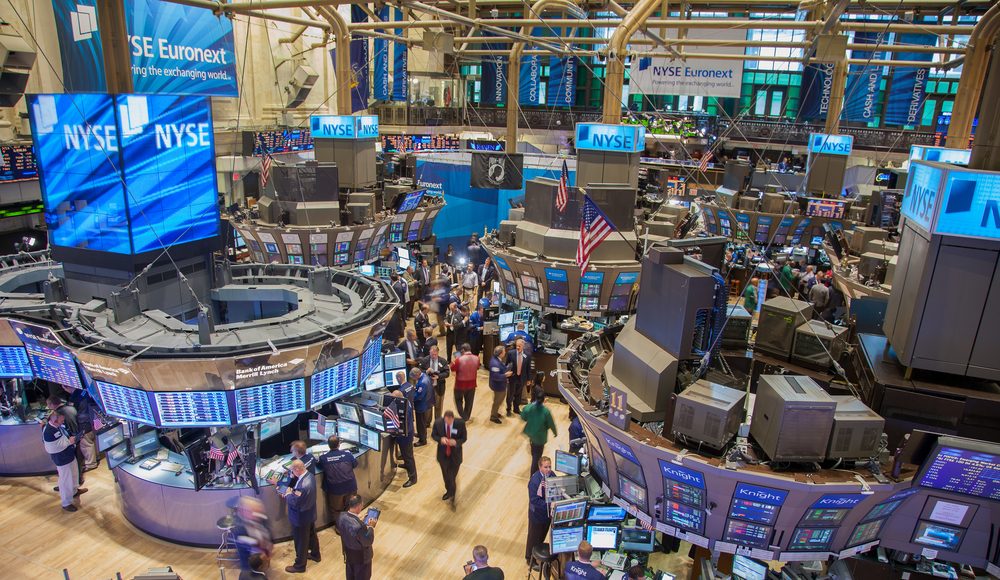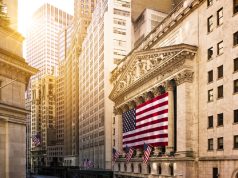The Federal Reserve appears ready to pivot. With the market pricing in an 89% chance of a rate cut next week, investors are hunting for stocks that could benefit most from cheaper money. While rate cuts help almost everyone, some companies stand to gain far more than others.
The secret is floating rate debt. Companies carrying variable-rate loans see their interest expenses drop immediately when the Fed cuts rates, providing an instant boost to earnings. Goldman Sachs recently screened for stocks with the highest proportion of floating rate debt, identifying companies that could see meaningful margin expansion as borrowing costs decline.
Here are three compelling names from that list, each offering different risk-reward profiles for the coming rate cycle.
Wyndham Hotels & Resorts (WH)
Current Price: $88.37 | Market Cap: $7 billion | Total Debt: $2.5 billion
Hotel stocks have been beaten down this year, and Wyndham is no exception. Shares are down 16% as investors worry about consumer spending and travel demand. But that selloff may have created an opportunity for those betting on Fed easing.
Wyndham operates as an asset-light hotel franchisor, collecting fees from over 9,000 properties worldwide. The company doesn’t own hotels—it licenses brands like Super 8, Days Inn, and Ramada to independent operators. This model generates consistent cash flow with relatively low capital requirements, but the floating rate debt structure means borrowing costs have been a headwind as rates climbed.
Wall Street is overwhelmingly bullish, with 14 of 15 analysts rating the stock a buy or strong buy. The average price target of $105.35 implies nearly 20% upside from current levels. That optimism reflects both the rate cut tailwind and Wyndham’s defensive business model during economic uncertainty.
The company’s international expansion story remains intact. Wyndham has been growing its presence in Europe and Asia, markets where it sees significant room for brand penetration. As rates fall and expansion costs decrease, this growth strategy becomes more attractive.
H.B. Fuller (FUL)
Current Price: $63.67 | Market Cap: $3 billion | Total Debt: $2.1 billion
This Minnesota-based adhesive manufacturer might not sound exciting, but H.B. Fuller serves some of the most stable end markets in the economy. The company produces industrial adhesives for everything from packaging to electronics to construction. When you open a cardboard box or use a smartphone, there’s a good chance H.B. Fuller’s products are involved.
The stock has fallen 9% this year as manufacturing weakness weighed on demand. But that creates an interesting setup for rate-sensitive investors. With $2.1 billion in floating rate debt relative to a $3 billion market cap, every quarter-point rate cut should provide meaningful relief.
Analyst sentiment is mixed, which often signals opportunity. The average price target implies 16% upside, but the range is wide—suggesting disagreement about timing rather than the underlying business quality. H.B. Fuller has consistently gained market share in its core adhesive markets, and the company’s recent acquisitions should start contributing to growth as integration completes.
The industrial adhesive market is surprisingly recession-resistant. Even during downturns, packaging needs continue and maintenance projects require adhesive solutions. This defensive characteristic, combined with the floating rate debt benefit, makes H.B. Fuller an intriguing play on Fed easing.
Aramark (ARMK)
Market Cap: $10 billion | Total Debt: $6.8 billion
Aramark carries the highest proportion of floating rate debt on Goldman’s list, with $6.8 billion in total borrowings. Currently trading around $39, the Philadelphia-based company provides food services and facilities management to businesses, schools, hospitals, and sports venues worldwide. Think cafeterias, concession stands, and corporate dining facilities.
The business model is inherently sticky. Once Aramark wins a contract to manage food services at a hospital or corporate campus, switching costs are high and relationships tend to last for years. This creates predictable cash flows that can service debt efficiently—especially important when you’re carrying nearly $7 billion in borrowings.
Shares have gained just 2% this year, underperforming the broader market despite the company’s defensive characteristics. That modest performance reflects investor concerns about consumer spending and the impact of remote work on corporate dining demand. But these headwinds may be overblown.
Corporate office occupancy continues recovering, and Aramark has adapted by expanding its higher-margin services like facilities management and workplace experience programs. The company isn’t just serving food anymore—it’s managing entire workplace environments.
Wall Street remains convinced, with 13 of 15 analysts rating Aramark a buy or strong buy. The average price target of $45.64 suggests nearly 18% upside potential. As the Fed cuts rates and Aramark’s interest burden lightens, those earnings estimates could prove conservative.
The Rate Cut Playbook
These three stocks represent different approaches to the same theme. Wyndham offers international growth with asset-light operations. H.B. Fuller provides industrial exposure with defensive end markets. Aramark delivers steady cash flows from essential services.
What they share is significant floating rate debt exposure that should benefit immediately from Fed easing. As borrowing costs decline, these companies will see direct improvements to their bottom lines—a mechanical benefit that doesn’t require strong economic growth or market expansion.
The Fed’s next move appears telegraphed, but the market may be underestimating how quickly rate cuts flow through to earnings for these debt-heavy companies. For investors positioning ahead of the Fed pivot, these names offer compelling risk-adjusted returns as the rate cycle turns.








